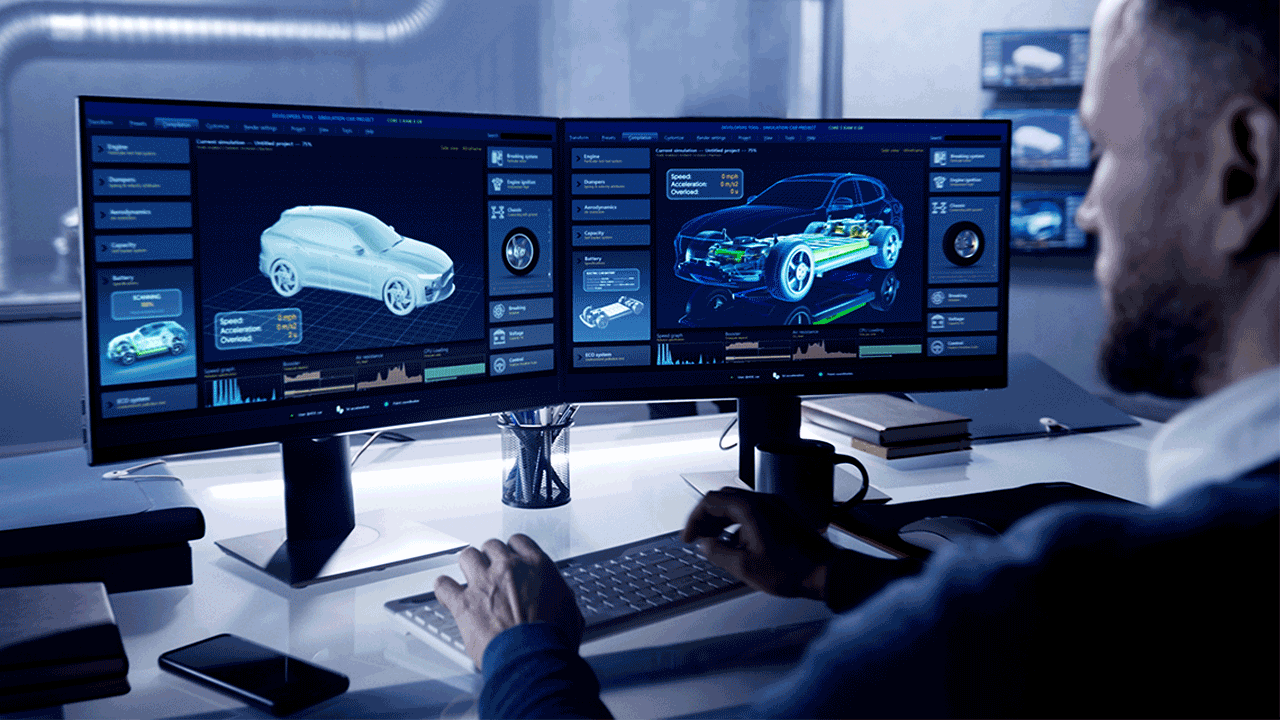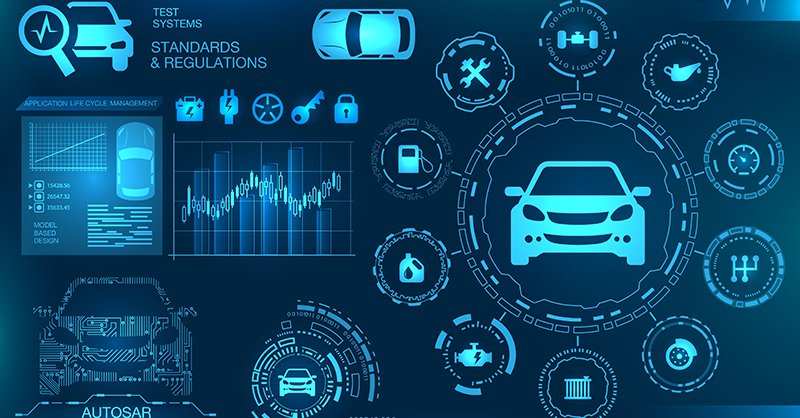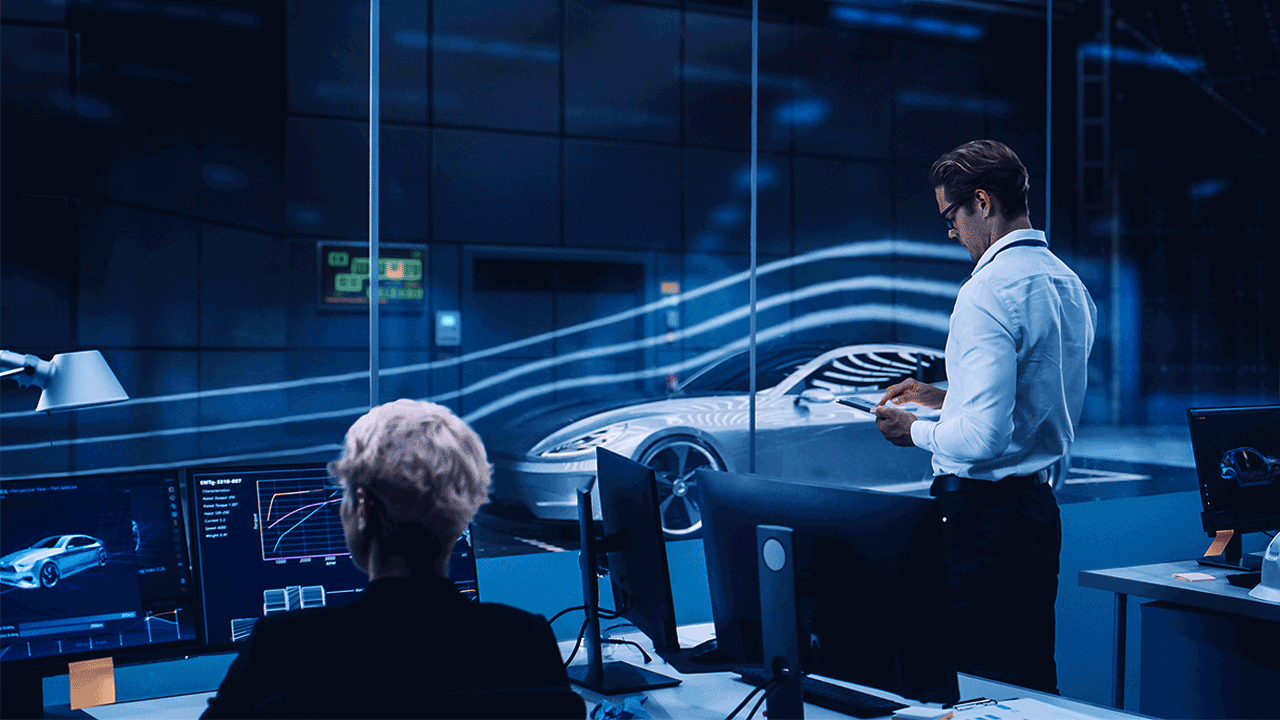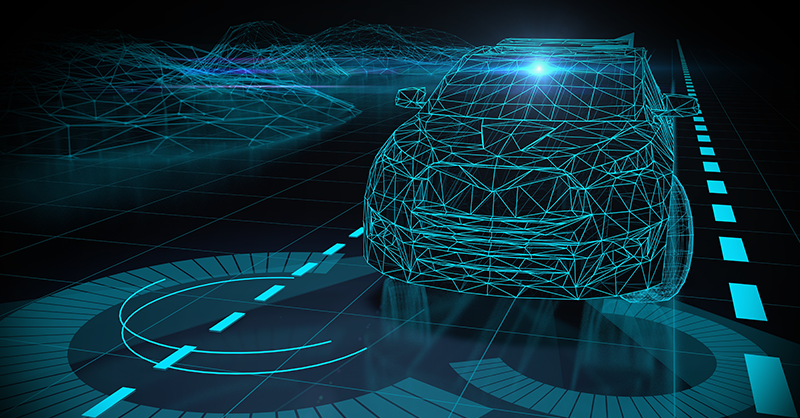A New Platform For Testing Complex Control Systems - Part 3
LHP is releasing a new product into our model-based design and test workflow at the Automotive Testing Expo in Novi, MI on 10/20. The LHP...
Unlock Engineering Insights: Explore Our Technical Articles Now!
Discover a Wealth of Knowledge – Browse Our eBooks, Whitepapers, and More!
Stay Informed and Inspired – View Our Webinars and Videos Today!
Exploring the future of software-defined vehicles through expert insights.

The phrase Hardware-In-the-Loop (HIL) refers to the process of testing a vehicle’s hardware by integrating it into a software environment and simulating different real-life scenarios for the hardware to react to. A vehicle’s components and subsystems interact with each other cooperatively, so the functionality of smaller components will affect how the entire vehicle operates.
By testing and validating the components of a vehicle in different scenarios, organizations can continue producing vehicles focused on safety and reliability. This testing can be done on vehicles with traditional internal combustion engines (ICE), electric vehicles (EVs), and even motorcycles.
Since manufacturers are currently deep in the development of hybrids and EVs, HIL testing will continue to be essential for testing and validating the behavior of components both now and in the future.
The overall purpose of HIL testing tools is to verify and validate that automotive products are operating as intended. From an organizational standpoint, this process helps accelerate product development and reduce any potential expenses from errors or hardware damages.
This testing benefits the overall product lifecycle development process because it identifies any issues with the operation of a component and allows engineers to address them. Whether pertinent to design or functionality, they can make changes early on to mitigate as many risks as possible. In turn, vehicles are developed with a minimized chance of failures and safety hazards.
Differentiating this process from Software-In-the-Loop (SIL) testing may provide additional insight into what HIL testing is and how it works. The main difference between each testing method is that a vehicle’s hardware and software will be in the loop separately.
In addition, one process often occurs before the other. Within the product lifecycle development process, the software is typically tested before the hardware because the coding and calibration within the software must function properly. At the same time, test benches will allow for both hardware and software devices to be integrated, which is necessary for integration.
For example, there will be instances where engineers use an EV test bench to test the interaction between a Battery Management System (BMS) and a Vehicle Control Unit (VCU). So, there are different phases where hardware and software can be tested together, but the most significant difference is that HIL testing involves simulating and testing the hardware itself.
When thinking about HIL testing and how the process works, an immediate question may come to mind: what does in-the-loop mean? The in-the-loop aspect of this testing process reflects how the hardware is simulated. By using a test bench—a stationary gearbox or workstation full of equipment—hardware can be tested in a controlled environment.
There are various test benches available to use, depending on whether the goal is to test components, subsystems, or vehicles themselves. HIL test benches often contain relevant vehicle components that can be input into a simulation.
Performing HIL testing in the context of the Functional Safety standard ISO 26262—from the International Organization for Standardization (ISO)—is a method many engineers and product developers are familiar with. This methodology incorporates HIL testing within the overall product lifecycle development process.
The first step is establishing the functional safety for how the hardware and software should perform. Then, the next step is designing and developing each based on those previously established requirements. After that, engineers perform the HIL testing by placing hardware inside the closed loop of the test bench.
HILs are automated to the point that they can test scenarios simultaneously, running through hundreds of tests in a short period. At the end of the tests, HILs provide a testing report full of data that engineers use to determine whether or not vehicle components are operating in compliance with their requirements.
Since many different organizations perform HIL testing, along with several suppliers and companies that make hardware and software, this process can be done with various tools and equipment. It depends on what the organizations are most familiar with or most comfortable using for their hardware.
For example, dSPACE—a company that designs HIL hardware—is a resource that engineering teams may use for an HIL test bench. In addition, there are several custom HIL testing tools and solutions as well as different National Instruments (NI) software options that can be utilized, such as:
Organizations should choose what is best for them based on what they are trying to test and what they are trying to achieve. There are several options to choose from, all of which play a role in the process of HIL testing. The hardware has to be connected to whatever software program is chosen for the testing simulation to happen. The decision-making of what software and tools to use may come down to the employees directly involved in this process.
Like many other automotive processes, HIL testing can involve various employees, depending on the moment itself.
The initial employees often involved with HIL testing are software engineers because they are the ones who create the simulated testing environment. They dictate what different scenarios hardware will test and react to. In addition, power electronic engineers may be involved with the construction of the HIL itself. There is a lot of wiring involved with HIL testing because the hardware has to be integrated with the sensors, actuators, or input/output (I/O) that emulate the scenarios previously established by software engineers.
Some engineers can be involved based on the level of hardware being tested. For example, a systems engineer will be directly involved with systems-level HIL testing to test how several systems function cooperatively. Other parties may include product developers who establish requirements and build test scripts. This is how engineers can determine whether components and systems are performing as intended within the testing environment. If not, they may have to go back and adjust the requirements or rewrite new ones entirely.
Different aspects of HIL testing require responsibility from different employees, and each is essential in guaranteeing a safe and efficient product development process.
The evolution achieved within the automotive industry has continued to place safety at the forefront of product development. HIL testing is important because the testing involved is controlled in a simulated environment. The process can focus on vehicles’ hardware functionality at a component and system level, which verifies and validates that the overall vehicle hardware is operating as designed. As vehicle design, software, and technology grow in complexity, the process of HIL testing can mitigate harm to these systems by testing them in a controlled environment.
There are immediate organizational benefits that highlight the importance of HIL testing. The process is meant to save organizations both time and money. The simulation runs through many tests that would require more time if done in real road-testing environments. In addition, things could become expensive if there were frequent or cascading damage to the hardware while undergoing actual road tests. Though some HILs may involve more human intervention than others, the overall process is highly automated, allowing for multiple tests to be done at once.
HIL testing also remains important for verifying certain hardware’s compliance with safety requirements. For example, part five of ISO 26262 addresses functional safety at the hardware level. HIL testing provides a way for organizations to verify the designs and requirements made during the early stages of the product lifecycle development process to comply with the standard. Likewise, part six of ISO 26262 addresses safety at a software development level. This verification is one way to measure the safety and reliability of vehicles that manufacturers are continuing to develop.
If organizations did manual testing instead of HIL testing, or its software-focused counterpart, then the hardware and software integrated into vehicles could be more tedious to verify and validate based on previously established testing requirements. Once these vehicles were in the market for consumers to buy, manufacturers would not be able to ensure their reliability. That could lead to potential component and software failures that result in product recalls. Since manual testing would most likely require more time and money, HIL testing is the more efficient option.
Another part of HIL testing focuses on identifying issues and uncovering errors that were not expected. Debugging is the process of correcting these issues found in the testing results of this process. HIL testing won’t uncover every issue, but engineers can run hardware through simulations repeatedly to ensure they are compliant with the requirements. This is important because it uncovers the different failures in hardware devices and allows for the chance to implement safety in the design (i.e. - add redundant hardware, watchdogs, etc.)
Engineers can test the overall robustness of hardware by testing and debugging as well. If a certain component is providing unexpected results or identifying multiple errors, engineers can do fault mitigation tests to provide context to the issues. Implementing faults and testing how the component reacts determines what changes need to be made in the design, or even the requirements established beforehand to allow those faults to be mitigated safely. This debugging process mitigates additional faults in hardware because the frequent uncovering of issues and testing provides engineers with opportunities to consider safety and performance more closely. This is another example of the opportunities HIL testing can provide, but organizations may also face constraints within this process.
There are some considerations to be aware of when undergoing the HIL testing process. One initial constraint involves setting up the HIL itself. Engineers have to set up the HIL test bench with all the equipment needed for testing and simulation, which can be time-consuming. In addition, there is significant coding that has to be written to automate the HIL system. The labor is tedious at the front end of this process, but it is necessary to start integrating the hardware and simulating it. The setup may take some time, but the HIL testing itself accelerates the product development process overall, so the payoff is worth the immediate constraints.
Another consideration for HIL testing is the role it will have in the future of automotive development. The electrification of vehicles is well underway, and HIL testing will have a significant role in EV development as it continues to evolve. Some organizations have facilities dedicated to EV testing and development, meaning they most likely will—or plan to—have a HIL integrated somewhere inside as well. EV components and subsystems can be tested to ensure that they operate as intended within their functionality and that their design is robust. More specifically, HIL testing will be essential for verifying the safety and operability of electrified components such as batteries and BMSs.
Suppliers and manufacturers must ensure that the EV components they produce can function without causing any harm to other systems or humans. These considerations will remain relevant as the industry continues making significant investments in electrification in the years to come.
The advancement of modern transportation has established different milestones in software and technology. Vehicles are safety-critical systems that will become more critical as the complexity of these systems evolves. By utilizing processes like HIL testing, engineers can test components’ functionality in simulated environments and address any identified issues. By addressing these issues, they can ensure that vehicles perform based on safety requirements and reduce the risk of safety-related failures on the roads that humans use daily.

LHP is releasing a new product into our model-based design and test workflow at the Automotive Testing Expo in Novi, MI on 10/20. The LHP...

Simulation and HIL Testing for Rapid Development Hardware-in-the-loop (HIL) testing is a necessary tool for any automotive manufacturer or supplier...

NI Drivven Powertrain Modules, Exclusively sold by LHPTS, an LHP division.